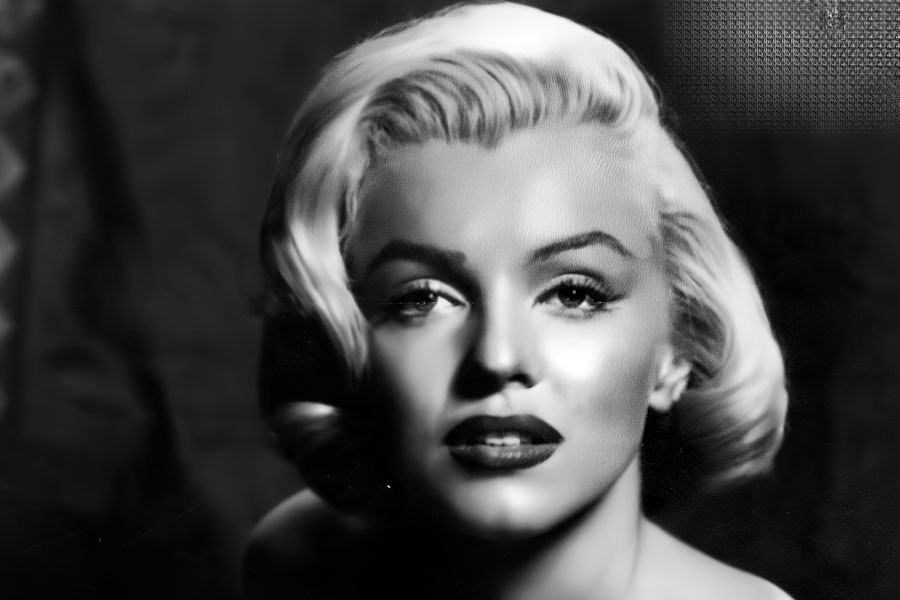Best-Selling Author James Patterson Says Marilyn Monroe Was “Probably Murdered,” Reigniting Decades-Old Debate

NEW YORK, NY – Bestselling novelist James Patterson – whose work spans more than 300 million copies sold globally and includes over one hundred New York Times bestsellers – has publicly stated he believes Marilyn Monroe was “probably murdered,” rather than dying by suicide. This notable shift from the official narrative has the potential to reignite one of Hollywood’s most enduring controversies.
Patterson’s reputation as a reliable commercial storyteller adds weight to his remarks. In a recent interview with The Hollywood Reporter, he said, “I think that she was treading in very dangerous waters.” He argues that Monroe’s relationships with the Kennedy brothers, Frank Sinatra, and influential figures connected to organized crime placed her in a position of heightened risk.
That statement is significant because it comes from someone with a high public profile and a consistent track record of output and reader trust. When such a figure challenges the accepted version of an event, it tends to attract renewed attention from popular culture and the press.
Although Patterson stops short of naming a culprit or presenting new forensic evidence, he frames his belief within a narrative of Monroe’s entanglement with powerful individuals and escalating vulnerability. According to his comments, the combination of her high-profile liaisons, fame, and drug use created a scenario where foul play was plausible.
He also emphasizes that the story of Monroe’s final days is still ripe for reinterpretation, given the number of contradictory witness statements and persistent questions about how her death has been handled historically.
Patterson made the remarks while discussing his forthcoming true-crime book, The Last Days of Marilyn Monroe, though he emphasized that his belief stems from long-standing questions about the official record rather than any newly uncovered forensic evidence.
Monroe died on August 5, 1962, at age 36, and the official verdict by the Los Angeles County coroner’s office was that her death resulted from a barbiturate overdose and was likely suicide.
Over the decades, numerous books and documentaries have challenged that conclusion. However, until now, many of those claims came from niche investigators or conspiracy-theory–inclined authors. When a mainstream figure like Patterson lends his name to the possibility of murder, the public narrative may shift.
Although the official record labels Monroe’s death a “probable suicide,” several alternative theories have persisted for more than sixty years. One of the most frequently cited disputes involves the sheer quantity of barbiturates found in her system. Some researchers and former investigators have argued that the level of drugs detected was so high that a person would likely have collapsed or lost consciousness long before they could physically ingest that amount on their own. According to this view, the toxicology results are inconsistent with a deliberate, self-administered overdose.
Other theories point to contradictions in the timeline presented by those inside Monroe’s home that night. Her housekeeper, Eunice Murray, gave multiple conflicting statements over the years about when Monroe last spoke, when the bedroom door was found locked, and when authorities were called — inconsistencies that have fueled speculation that the scene may have been, or perhaps was, altered or delayed before first responders arrived.
A separate line of theory involves Monroe’s proximity to powerful men in her final months, including President John F. Kennedy and Attorney General Robert F. Kennedy, as well as her well-documented social ties to Frank Sinatra and individuals connected to organized crime. Some authors have suggested Monroe possessed sensitive personal or political information, making her vulnerable within those overlapping circles.
Others have raised questions about the lack of pill residue in her stomach, the absence of needle marks despite the drug levels, and early police reports that seemed incomplete or hastily written — all of which have been interpreted by some as potential signs of staging or mismanagement rather than suicide.
While none of these theories have been substantiated by law-enforcement findings, they have endured as part of the broader debate over what truly happened inside Monroe’s Brentwood home on the night of August 4, 1962.
Because Patterson plans to present Monroe’s story as a “true crime thriller” — while noting the unresolved uncertainties — his vocal belief could spark renewed interest in the case, not just among readers but among journalists, historians, and legal-forensic scholars. At a minimum, it may lead to renewed media coverage and debate about Monroe’s legacy, the transparency of the original investigation, and whether any avenues remain unexplored.
It is important to note that the official status of Monroe’s death remains unchanged. Investigations — including a 1982 review by the Los Angeles district attorney’s office — found no credible evidence of homicide and upheld the original ruling.
Patterson’s position does not rest on previously unknown scientific evidence, but rather on his interpretation of the existing record combined with his storytelling instincts.
For Monroe’s many fans and historians, Patterson’s stance offers a credible voice questioning the accepted version of her death. For Patterson himself, it signals a deeper pivot into real-world crime narratives rather than pure fiction.
Key Facts & Details
| Category | Details |
|---|---|
| Subject | James Patterson’s public statement that Marilyn Monroe was “probably murdered.” |
| Who Is James Patterson? | One of the best-selling authors in the world with 300M+ books sold and 100+ New York Times bestsellers. |
| Why It Matters | A highly credible mainstream figure questioning the official suicide ruling brings renewed legitimacy to long-standing alternative theories. |
| Official Cause of Death (1962) | Barbiturate overdose; ruled a “probable suicide” by the Los Angeles County coroner. |
| Case Status | Unchanged; a 1982 Los Angeles DA review found no credible evidence of homicide. |
| Patterson’s Position | Monroe may have been murdered due to the dangerous combination of political connections, powerful relationships, and personal vulnerability. |
| Key Risk Factors Cited | Ties to JFK and Robert Kennedy; friendship with Frank Sinatra; proximity to individuals connected to organized crime. |
| Common Alternative Theories | Drug levels allegedly too high for self-ingestion; conflicting witness timelines; possible delayed or altered scene; absence of pill residue; incomplete early police reports. |
| Why the Case Endures | Contradictions in evidence and testimony, decades of competing investigations, and ongoing public fascination with Monroe’s final hours. |
| Impact of Patterson’s Statement | Likely to spur renewed media coverage, scholarly review, and broader cultural debate about Monroe’s death. |


